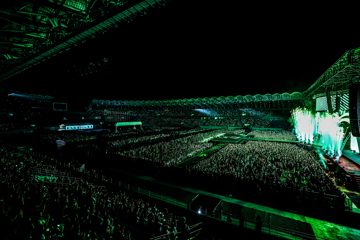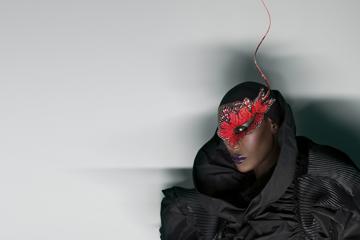Industry Concerns As Radio Airplay Charts Show No Australians In The Top 10
Are Australian radio's quotas being met?

Radio (Supplied)
This week marks a low in Australian music on radio with not one Australian song making it into the Radio Monitor top ten. Looking deeper and the entire Hot 100 showed only 13 Australian tracks, with five of those entries having no metropolitan commercial radio spins at all (entering the chart on the strength of triple j, community radio and/or regional support). The international top ten is replicated over on competitor RCS Media Monitors which uses a different methodology, but highlights the same issue.
In a nadir for local content on the airwaves, music industry figures this week discussed whether quotas were being followed and how it’s possible for a country with a 25% top 40 radio quota to be missing Australian content among its most-played hits. The Music crunched the numbers on the three Sydney stations playing current music (2Day FM, Kiis and Nova) and have shown that in fact radio stations ARE largely meeting their quota obligations. So what is going on and how can these two things be right at once?
The first thing at play is that Australia’s so-called 25% quota isn’t actually a 25% quota. Stations are able to self-regulate by designating which format they are, with lower quotas if they are not playing current top 40 music formats. Currently (as per the most recent Australian Music Content Return), 2Day FM is registered as an easy listening station (with a 10% quota), Kiis and Nova are both registered as a Hot AC with a 20% quota. The only format with the often-quoted 25% mandatory content level is CHR (Contemporary Hit Radio or top 40), of which Sydney has no stations reporting under that format.
We approached Commercial Radio and Audio to confirm whether any of the stations had logged changes to their format since the last published report. 2Day FM’s music focus changed earlier this year to become the “hits before they hit”, which is a clear indication of a CHR format and their current play quota of 23.5% suggests the 25% quota is close to being met. The figures looked at were a single week, so it must be considered that some variation above or below quota week and are likely largely compliant. For Nova and Kiis, they would seem to still see themselves as being a Hot AC format, which is a point of contention from many we spoke to from both the music and radio industries (with their top ten most played songs each week being current chart hits). According to the categorisation, their target of 20% is being reached, with 21.8% and 20.2% respectively, showing compliance with the code.
In response to The Music’s enquiries, Commercial Radio and Audio did not confirm what formats the stations were currently reporting under, but a spokesperson said:
“CRA notes that all members are compliant with their Australian Music quota obligations and reporting. We are the only fully Australian owned commercial medium in the country with quotas supporting Australian music and we remain committed to driving and sustaining a vibrant Australian music scene on our airwaves be it broadcast or digital.”
Don't miss a beat with our FREE daily newsletter
While the quota is important, it doesn’t tell the whole story on how much Australian music is being heard by the public. The quota does not take into consideration WHEN songs are played, with peak listening times in breakfast, drive and across the day making up around 80% of the overall listening. The music industry has long accused stations of playing their Australian music “off broadway” in late night listening hours and Radio Monitor figures when weighted for audience would bear that out.
When weighted for audience per spin rather than number of plays, the percentage of Australian music being heard drops markedly to 14% on Kiis, 16% on 2Day FM and 12% on Nova. This is a far cry from the 25% that many mistakenly believe the quota is upholding. There is no obligation under the code for this consideration and as shown above, stations are largely compliant with their current obligations.
ARIA and PPCA CEO Annabelle Herd said that while stations were compliant, they were “not reflecting the spirit” of the code, as the radio charts show.
“Technically, yes, most stations are ticking the boxes,” she said. “But the system is clearly not meeting the spirit of the Code, which is to make sure Australians can hear themselves reflected in the culture they consume. Right now, the Code allows stations to meet their targets in off-peak slots when fewer people are listening. It also lets them self-select the category that determines how much Australian content they play. It’s hard to take the framework seriously when only one station in the country has nominated itself as a ‘Hit Music’ station even though ‘hit’ and Top 40 appears in so many station names and slogans.”
“We’re calling for three practical changes: tie quotas to peak listening hours, ensure stations’ self-nominated formats actually reflect what they play, and make monitoring more transparent. These are simple, fair reforms that don’t punish radio, they just make sure Australians actually get to hear Australian music when they’re listening.”
The other difficulty the data shows for Australian music is repetition. Right now, while Australian music is being heard, the “super high” rotations are not happening for the local tracks. To fulfil the Australian music obligation, more songs are being played, but being played less often. On Kiis, Huntr/x and Justin Bieber have songs being heard around 40 times each for the week (6am to midnight), while the highest Aussie tracks Guy Sebastian and Dean Lewis are 27 and 26 respectively. Over on Nova, Huntr/x and Disco Lines are hitting 35 spins each while the leading Aussies Guy Sebastian and Vance Joy are 20. 2Day FM has 47 spins for their highest rotating hit from Olivia Dean, while their highest rotating Australian hit Keli Holiday’s Dancing2 is at 29 spins.
The Music spoke to industry consultant Emily Copeland, previously Head of Music for ABC and triple j and General Manager of ARN station Cada, who reiterated the importance of repetition to build hits, acknowledging the balance radio must tread between their commercial needs and responsibility to the ecosystem.
“We know that when people hear songs repeatedly, they like them more. Familiarity and likability are linked. For commercial radio in particular, they play songs people like to grow listenership in order to commercialise that audience, and this can create a challenge.”
So is it the chicken or the egg? Does radio airplay create hits or do hits deserve radio airplay? A radio industry insider who requested anonymity said that while they believed radio should be shouldering some of the responsibility to create hits, that the burden of that should not be theirs alone.
“Ultimately we have to work together, but it’s the Australian music industry’s job to provide top 40 hits if they want top 40 radio to play them. Radio is not responsible for the A&R and marketing of Australian music.”
The source said that radio was no longer the discovery platform that it was in decades past and that in a world where consumers were finding new music across places like YouTube, TikTok, Netflix and Spotify, radio’s “difficulty in finding Australian hits” was a symptom, not a cause of the problem.
“Australian music doesn’t have a radio problem, it has a marketing problem,” they said.
When put to her, Annabelle Herd strongly refutes the claim:
“That argument ignores reality. Australian artists are delivering world-class hits, just look at the global success of acts like Troye Sivan, Kylie, Dom Dolla, The Kid LAROI, and Tones and I. The songs are there. The problem is that the system doesn’t give them fair exposure at home. It’s also ironic to see radio advocating so strongly for regulated prominence in cars and on digital platforms because they understand how important access is. They just don’t apply the same logic to Australian music on their own stations.”
Music industry insiders The Music spoke to agreed that a global priority song for a record company does have the benefit of international marketing budgets bleeding into this territory via social media, streaming, TV and press appearances which are increasingly US-centric and replacing traditionally domestic mediums. This would seem to have Australian artists beginning the race well behind the starting line in their home territory, with domestic marketing budgets under pressure.
Emily Copeland believes that a broader cultural shift is required on the demand side of the Australian music equation, with the roles of traditional feeders of music, from small live venues through to media and radio changing over the last decade.
“It’s not an us vs them situation,” she said. “Radio is full of great people who are passionate about Australian music. I think part of the answer is to get the public demanding more Australian content. If they demand more from the broadcasters, then more will be played. That will flow on to revenue for artists and the industry and ultimately create a healthy industry ecosystem.”
Annabelle Herd says that radio still has cultural power and that collaboration between the two industries is vital.
“Radio and music should be working together to build a stronger local culture. That means collaboration on campaigns, programming that celebrates major Australian moments, and playing new local music consistently. That means before they’ve already gone viral overseas.”
Either way, while fingers are pointed in both directions, Australian music continues to languish on our local charts. So next time someone says radio stations are not living up to their obligations to play Australian music, you can confirm that in fact they ARE. But if regulators want to see 25% Australian music being heard on our airwaves, then the current ACMA review of the Commercial Radio Code of Practice would need to address the current loopholes which are big enough to drive a Taylor Swift-sized truck through.
EDIT NOTE: This story was edited on 9/10/25 to include a response from Commercial Radio and Audio.







